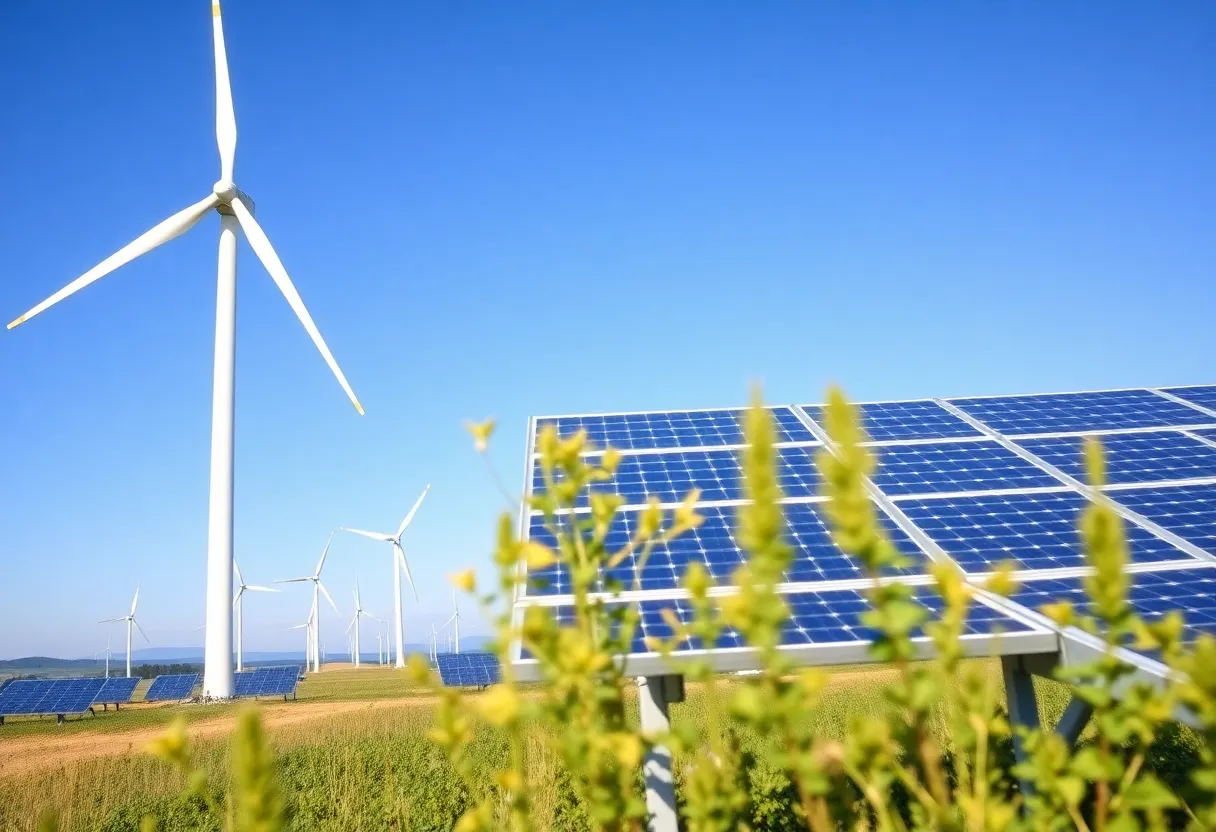News Summary
The Department of Treasury and the IRS have announced new regulations impacting tax credits for wind and solar projects. These changes, stemming from an executive order, will enforce stricter requirements under Sections 45Y and 48E for projects that begin construction after a set deadline. The updated guidelines eliminate previous safe harbor options, raising concerns in the renewable energy sector about potential barriers to project development and increased electricity prices. Industry advocates argue that these measures could hinder progress toward low-carbon energy solutions.
Washington, D.C. – New regulations released by the Department of Treasury and the Internal Revenue Service (IRS) on August 15, 2025, will impose stricter requirements on wind and solar projects to qualify for tax credits under Sections 45Y and 48E, known as the Tech-Neutral Tax Credits. The new guidance follows an executive order from President Donald Trump aimed at reducing subsidies for unreliable and foreign-controlled energy sources.
The changes outlined in IRS Notice 2025-42 will take effect for projects that begin construction on or after September 2, 2025. Following the guidance will affect claims for tax credits associated with renewable energy projects, particularly those that do not commence significant construction activities before the stipulated deadline of July 4, 2026.
The recent legislation, termed the One Big Beautiful Bill, passed in July 2025, eliminated tax credits for wind and solar facilities that are placed in service after December 31, 2027, unless construction commences by July 5, 2026. This regulatory update notably removes the 5% Safe Harbor option previously available for proving that construction has started on wind and most solar facilities, although some exceptions apply.
To qualify under the new guidelines, projects must adhere to criteria established in the Physical Work Test. This stipulates that projects can demonstrate they have begun construction either through onsite activities or offsite work carried out under a binding contract, including the manufacturing of project equipment. However, activities such as surveys and test drilling fail to meet the threshold of “physical work of significant nature,” thus not qualifying for tax credits.
Despite the stricter regulations, the Continuity Safe Harbor remains in place. This provision allows facilities to be placed in service within four years following the initiation of construction, thus satisfying continuity requirements. While adequate documentation of a continuous construction program is advisable, the IRS guidance does not detail specific documentation standards.
The implementation date set for new construction requirements and associated changes has raised concerns within the renewable energy sector. Industry advocates believe that these regulations will hinder the development of low-carbon energy sources and subsequently increase electricity prices by adding barriers to project initiation and completion. Critics of the rules argue that the guidance complicates the tax credit process and negates previously established standards that were part of earlier negotiations during the legislative process.
These developments come amid ongoing tensions within the Republican party, particularly between more moderate members and conservatives who pushed for stricter regulations on renewable tax credits during the bill’s passage. Some politicians believe that the new guidelines, despite being perceived as more challenging, create a pathway for the industry to address energy demands.
Overall, the IRS’s adjustments reflect a significant policy shift in managing renewable energy credits by enforcing a strict interpretation of the construction start requirements. This could make it essential for renewable energy projects to demonstrate ongoing construction activities clearly in order to claim the relevant tax credits established for promoting sustainable energy development.
Deeper Dive: News & Info About This Topic
HERE Resources
Additional Resources
- The Hill: Treasury Guidance on Wind and Solar Tax Credits
- Utility Dive: Treasury Commence Construction for Wind and Solar Tax Credits
- Wall Street Journal: European Renewable Stocks Rise After U.S. Tax Credit Guidance
- Recharge News: Wind Power Stocks Surge After U.S. Tax Credit Specification
- Politico Pro: Treasury Reportedly Tightens Screws on Tax Credits for Renewables
Author: STAFF HERE BALTIMORE WRITER
The BALTIMORE STAFF WRITER represents the experienced team at HEREBaltimore.com, your go-to source for actionable local news and information in Baltimore, Baltimore County, and beyond. Specializing in "news you can use," we cover essential topics like product reviews for personal and business needs, local business directories, politics, real estate trends, neighborhood insights, and state news affecting the area—with deep expertise drawn from years of dedicated reporting and strong community input, including local press releases and business updates. We deliver top reporting on high-value events such as the Baltimore Book Festival, Preakness Stakes, and Artscape. Our coverage extends to key organizations like the Baltimore Chamber of Commerce and Visit Baltimore, plus leading businesses in shipping and healthcare that power the local economy such as the Port of Baltimore and Johns Hopkins Medicine. As part of the broader HERE network, we provide comprehensive, credible insights into Maryland's dynamic landscape.





